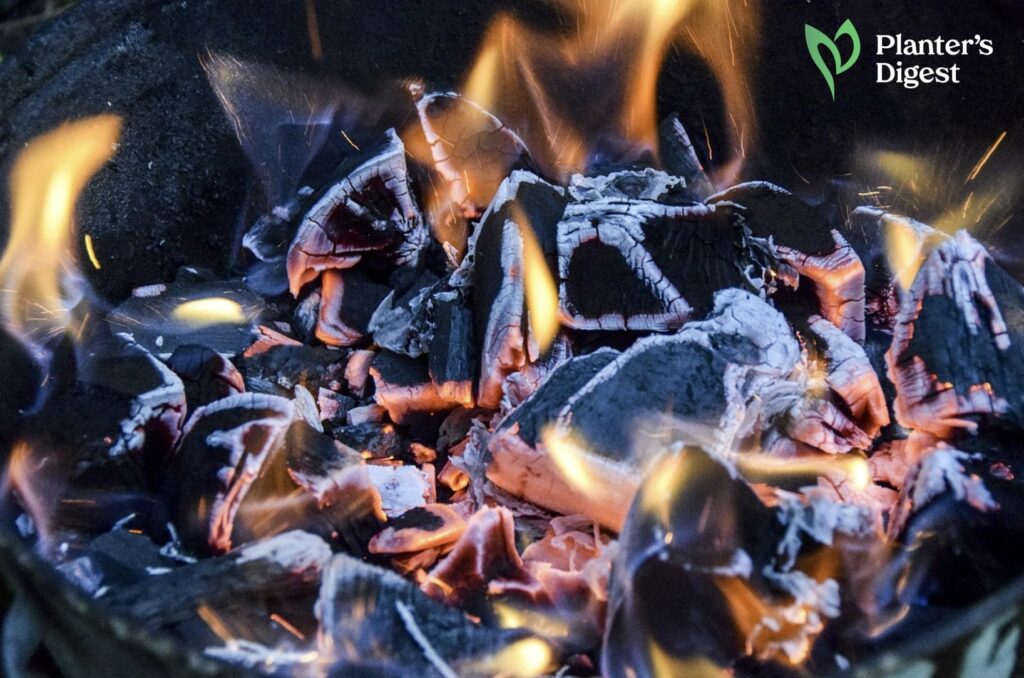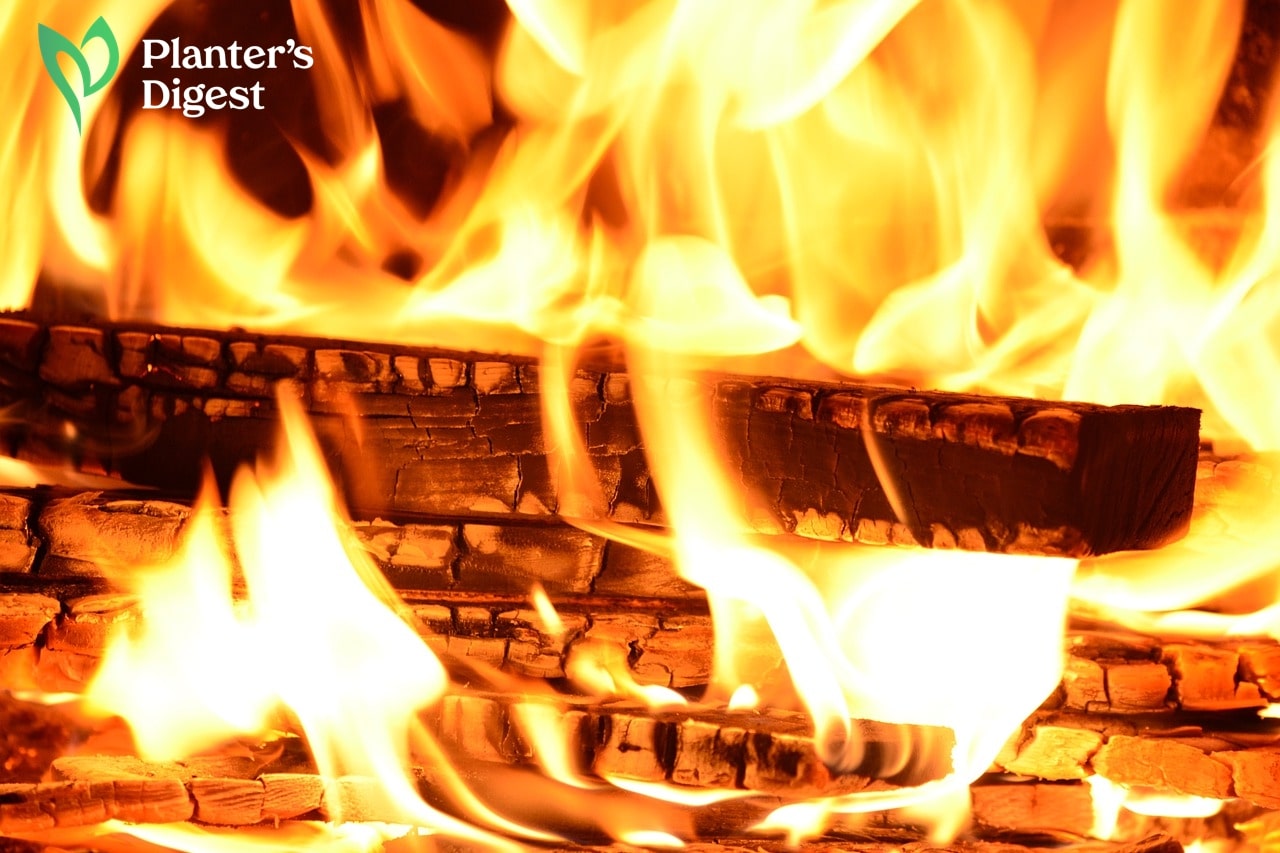
It’s a cold winter night, and you’re trying to start a fire to keep you warm by the fireplace. But for some reason, the fire’s just smoldering and it just won’t catch.
This scene is ultimately annoying and frustrating but don’t give up just yet! Let us help you understand why firewood tends to smolder instead of burn, how you can prevent it and start a fire like a pro.
Why is your firewood smoldering and not burning?
Firewood smolders because of lack of oxygen, use of bad fuel source or damage in the fireplace setting.
A smoldering firewood produces a dull orange fire with a high amount of smoke. Its faint flames give off warm heat but does not reach of the peak heat output of the firewood.
The “fire triangle” tells us that you need three things to start a fire – oxygen, heat and fuel. If one of these is missing, expect problems like smoldering to occur.
Let’s discuss how each reason prevents firewood from burning.
1. Use of Bad Fuel Source
The quality of firewood largely affects its capacity to start a fire. Unfortunately, the use of wet or rotten wood are the culprits that prevent wood from catching fire.
When firewood is not properly seasoned or completely dried out, or if wood is already rotten, then creating fire will take a long time.
Since most of its energy will be directed towards evaporating the remaining moisture and other substances in the firewood, it won’t generate as much heat compared with burning well-seasoned wood.
Additionally, wet or rotten wood will not only catch fire but also decrease the quality of fuel that the firewood can give. Water essentially cools things down and reduces heat, so if you’re burning green or wet wood, then water will actively reduce heat from the fire.
2. Lack of Oxygen
Firewood struggles to create hot fire when there isn’t enough oxygen, which usually happens when wood has been stacked too closely. To be safe, leave one to two inches between every piece of wood so there will be ample airflow and sharing of heat.
When there is no enough airflow around the firewood, there’s not enough oxygen to start up a good fire. Similarly, if you cover the flame, you’ll end up snuffing out the fire because of lack of oxygen.
It’s a good practice to start with burning smaller pieces of wood because it’s easy for them to absorb oxygen and build heat. Thereafter, you can stack larger pieces as additional fuel to the fire.
3. Damage in Fireplace Setting
The fireplace setting itself is vital in making or breaking fire. When the fireplace vents are either opened or closed with little space, there’s little oxygen brought to the fire.
When burning firewood in the fireplace, make sure that your damper is open so the gases may escape through the chimney and new oxygen can enter and enrich the fire in the fireplace.
Otherwise, no matter how much you try lighting your firewood, they will just keep smoldering.
Another common issue is the cold chimney syndrome where there is a build-up of cold air in your chimney, which prevents warm air from escaping. This phenomenon is common in chimneys built on exterior walls.
To address cold chimney syndrome, make sure to warm up your chimney using a piece of paper or blowdryer to warm up the cold air.
How to Make Your Firewood Burn
After identifying the reason why your firewood just keeps smoldering, check out these proven and tested tips on how to be a pro in starting a fire.
1. Burn seasoned firewood only.
Always check the quality of your firewood and make sure it’s well-seasoned. Generally, it takes between 6 to 12 months for wood to completely dry out and ready for use as firewood.
The goal is to evaporate all the moisture, and even sap content, in the wood so that all its energy will be directed towards starting fire, instead of evaporating these substances and prevent smoldering.
If you fail to do so, you’ll end up with smoldering firewood, a lot of smoke, creosote and even sparks as it burns.
2. Use the right tinder materials.
Having the right tinder materials is vital in fire-building and sustaining those hot flames. You can use small twigs, dryer lints or newspapers as tinder.
As you light these tinder materials, it will set alight the split seasoned firewood and get the fire going.
3. Open your fireplace damper.
Before you begin, check if your fireplace damper is open at the right space. This will help make sure that combustion byproducts can fully escape your chimney while new oxygen can keep the fire burning.
4. Warm up the cold air.
A build-up of cold air in your chimney which prevents warm air from escaping, especially on chimneys built on exterior walls.
To resolve this, you’ll have to pre-heat your chimney. You can either create a newspaper torch or use a hair dryer and holding it up toward the damper for at least 10 seconds to divert its warm air inside the chimney flue.
5. Keep your firewood at room temperature.
Logs that have been long exposed to chilly temperatures struggle to ignite. So, it’s best that you keep the logs that you plant to burn inside your home at room temperature before burning them in your fireplace.
6. Try the top-down lighting method.
| Difficulty | Easy ●○○○○ |
| Duration | 30 minutes to 1 hour |
| Things You Need | • Firewood • Kindling sticks • Natural firelighters |
The top-down method is a popular lighting strategy which makes fire less smokey while maximixing its fuel efficiency. Below are the steps on how to light a top-down fire in your fireplace or stove.
| How to Do 1. Place the large pieces of firewood at the bottom of your stove or fireplace. 2. Stack a second layer using smaller pieces of firewood in the opposite direction. 3. Add a third layer of smaller dried firewood opposite the layer beneath it. 4. At the top of the stack of firewood, spread a layer of kindling. 5. Set alight 2 to 3 of the natural firelighters and place them between the kindling to start the fire. 6. Make sure that your damper is open or the combustion fan is set on high setting to increase oxygen flow into your fireplace or stove. 7. Wait for the fire to slowly descend through the layers of firewood. 8. Sit back and enjoy your top-down fire! |
FAQs on Firewood Smoldering But Not Burning
Although both are used to start a fire, tinder refers to small, loose materials that burn fast while kindling pertains to small sticks that burn slowly to sustain the fire.
Well-seasoned firewood turns gray, weighs lighter, and forms cracks at the end of the logs.
Smoldering requires a minimum of 16% of oxygen to sustain its flammable conditions.
Smoldering can become a flaming fire once the fire moves and ignites different materials.
Fires cannot burn without oxygen. In fact, it needs at least 16% of oxygen to burn.




